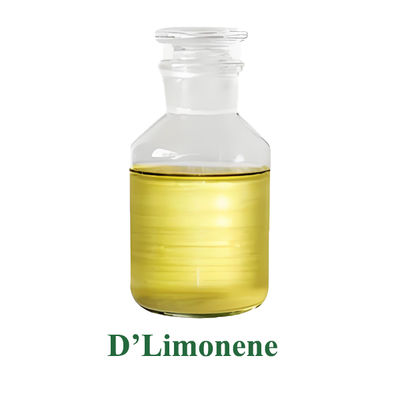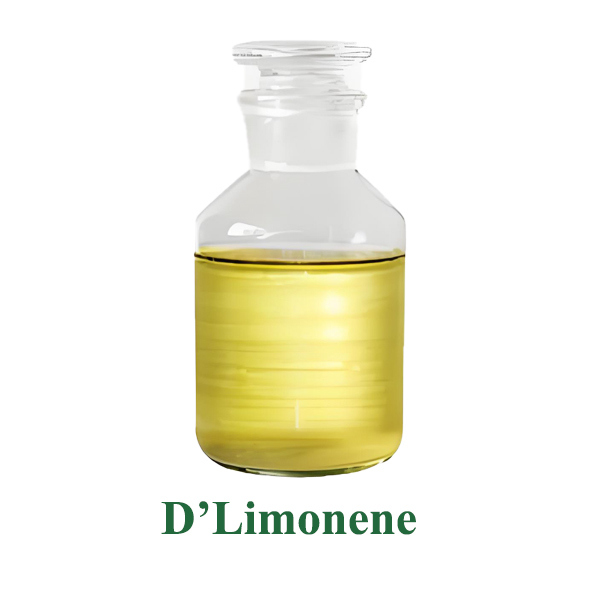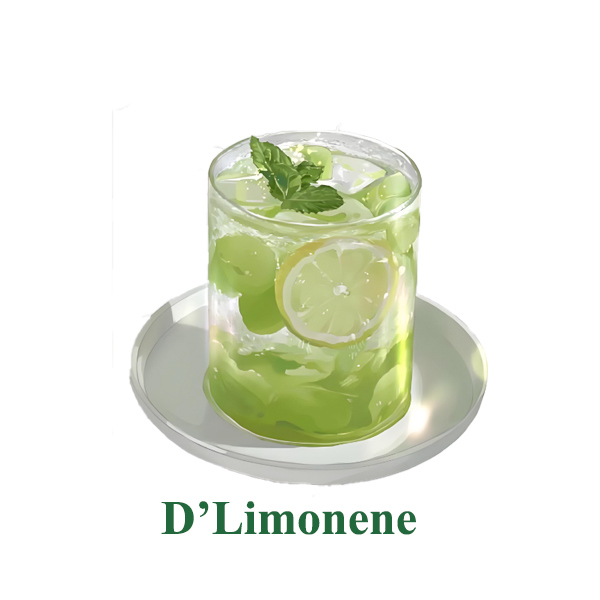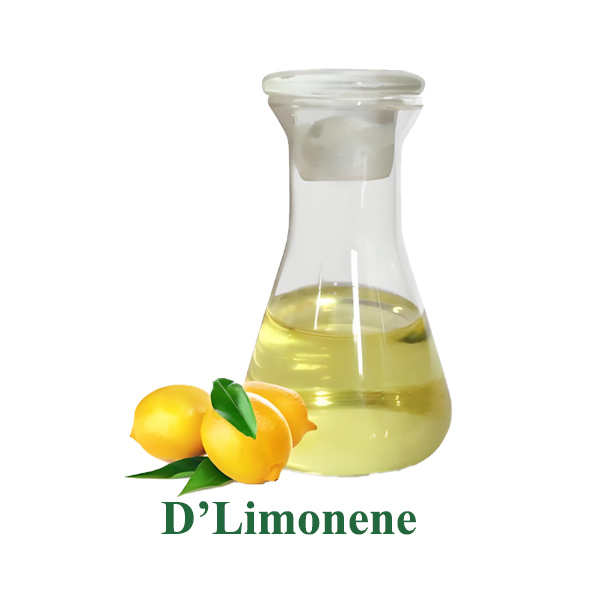-
Highlight
limonene essential oil
,natural limonene fragrance
,plant-based limonene oil
-
Product NameD’Limonene
-
CAS138-86-3
-
Purity99.9%
-
AppearanceLiquid
-
Shelf Life2 Years
-
MOQ5KG
-
PackingFoil Bag,Bottled,Drum,Carton,Container
-
QualityNatural Raw Materials, Safe And Harmless, No Addition
-
Boiling Point170-180 °C (lit.)
-
Density0.86 G/mL At 20 °C (lit.)
-
EINECS205-341-0
-
Place of OriginShaanxi, China
-
Brand NameBaisfu
-
CertificationD’Limonene
-
Model Number107-92-6
-
Minimum Order Quantity5kg
-
Price20.59USD
-
Packaging DetailsFoil bag,Bottled,Drum,Carton,Container
-
Delivery Time10-15 work days
-
Payment TermsT/T,Western Union,D/P,L/C
-
Supply Ability20,000 kilograms a month
High-quality limonene is used in 95% of everyday fragrances
D-Limonene is a naturally occurring monoterpene compound (chemical formula C₁₀H₁₆), the dextrorotatory isomer of limonene. It is abundant in the essential oils of citrus fruit peels (oranges, lemons, grapefruits) and can also be synthesized artificially. Characterized by its fresh and pure citrus aroma, it also possesses excellent solvent properties and physiological activity, making it widely used in food, daily chemical, and industrial fields. It is a classic category of natural extracts that combines aroma function with practical value.
Chemical Composition: A single chemical substance; the purity of naturally extracted products is typically ≥95%, while the purity of synthetic products can reach over 98%. Its chemical name is (+)-1-methyl-4-(1-methylvinyl)cyclohexene, with a well-defined and stable structure.
Physical Properties: At room temperature, it is a colorless, transparent liquid with a rich, fresh citrus aroma (orange, lemon-like), highly recognizable. Its boiling point is approximately 176℃, and its flash point is 46℃. It is sparingly soluble in water but readily soluble in ethanol, oils, and most organic solvents. It is highly compatible with various chemical raw materials and food ingredients.
Chemical Properties: It exhibits typical characteristics of terpenoids, is easily oxidized (producing citral, carvone, etc.), and shows good stability under light-protected and sealed conditions. It can undergo addition, oxidation, and isomerization reactions, and can be used as an intermediate in organic synthesis.
| Product Name | D’Limonene |
| CAS | 107-92-6 |
| EINECS | 205-341-0 |
| Type | Food Flavors |
| Brand Name | BAISIFU |
| Appearance | Liquid |
| Shelf Life | 2 years |
| MOQ | 5KG |
| Origan | Shaanxi,China |
| Purity | 99% |
| Packing | Foil bag,Bottled,Drum,Carton,Container |
| Storage | Sealed in dry,Room Temperature |
| density | 0.86 g/mL at 20 °C (lit.) |
-
Food and Beverage Sector
Food Flavoring: Widely used in confectionery (citrus-flavored hard candy, soft candy), baked goods (cakes, cookies, bread), ice cream, jelly, candied fruit, etc., imparting a fresh citrus flavor and enhancing the sensory appeal of products.
Beverage Blending: Used in carbonated beverages, fruit juice beverages, dairy beverages, tea beverages, and alcoholic beverages (such as cocktails, fruit wines), simulating the aroma of natural citrus, enriching the taste layers, and masking off-flavors of raw materials.
Food Flavor Blending: As a core citrus aroma component, used in blending tropical fruit, herbal, and other complex fragrances, adapting to various food production needs.
-
Daily Chemicals and Cleaning Sector
Personal Care Products: Added to shampoos, shower gels, body lotions, hand creams, toothpaste, mouthwash, etc., imparting a fresh citrus aroma, improving the user experience, and masking the odors of chemical raw materials.
Cleaning Products: As a natural solvent and fragrance ingredient, used in dishwashing liquids, laundry detergents, oil stain removers, car interior cleaners, etc., effectively dissolving grease and dirt while releasing a fresh fragrance, replacing some chemical solvents.
Fragrance products: Used in air fresheners, aromatherapy sprays, scented candles, etc., mainly featuring a refreshing citrus scent to create a bright and comfortable atmosphere.
-
Natural and Safe, Meeting Health Needs: Derived from citrus peels, it possesses strong natural properties. Compared to chemically synthesized solvents and fragrances, it is less irritating to the human body, has good biocompatibility, and is easily degraded in the natural environment, aligning with the consumption and production trends of "natural and environmentally friendly."
-
Multifunctional and Highly Practical: Pure Aroma, Naturally Lingering: The fresh, non-pungent citrus aroma can mimic the flavor of natural citrus. It can be used alone as a fragrance or blended with other scents, adapting to various fragrance needs.
Excellent Solvent Performance: Strong dissolving power, effectively dissolving oils, resins, and dirt, with moderate volatility, leaving no residue after use as a solvent, replacing some toxic and harmful industrial solvents.
-
Abundant Raw Materials, High Cost-Effectiveness: Citrus fruits are abundant and widely distributed. The peels, as agricultural byproducts, are readily available and inexpensive raw materials. Mature extraction processes (cold pressing, steam distillation) ensure stable yields. Both natural extraction and synthetic products can meet the needs of different fields, offering a significant cost-performance advantage.





